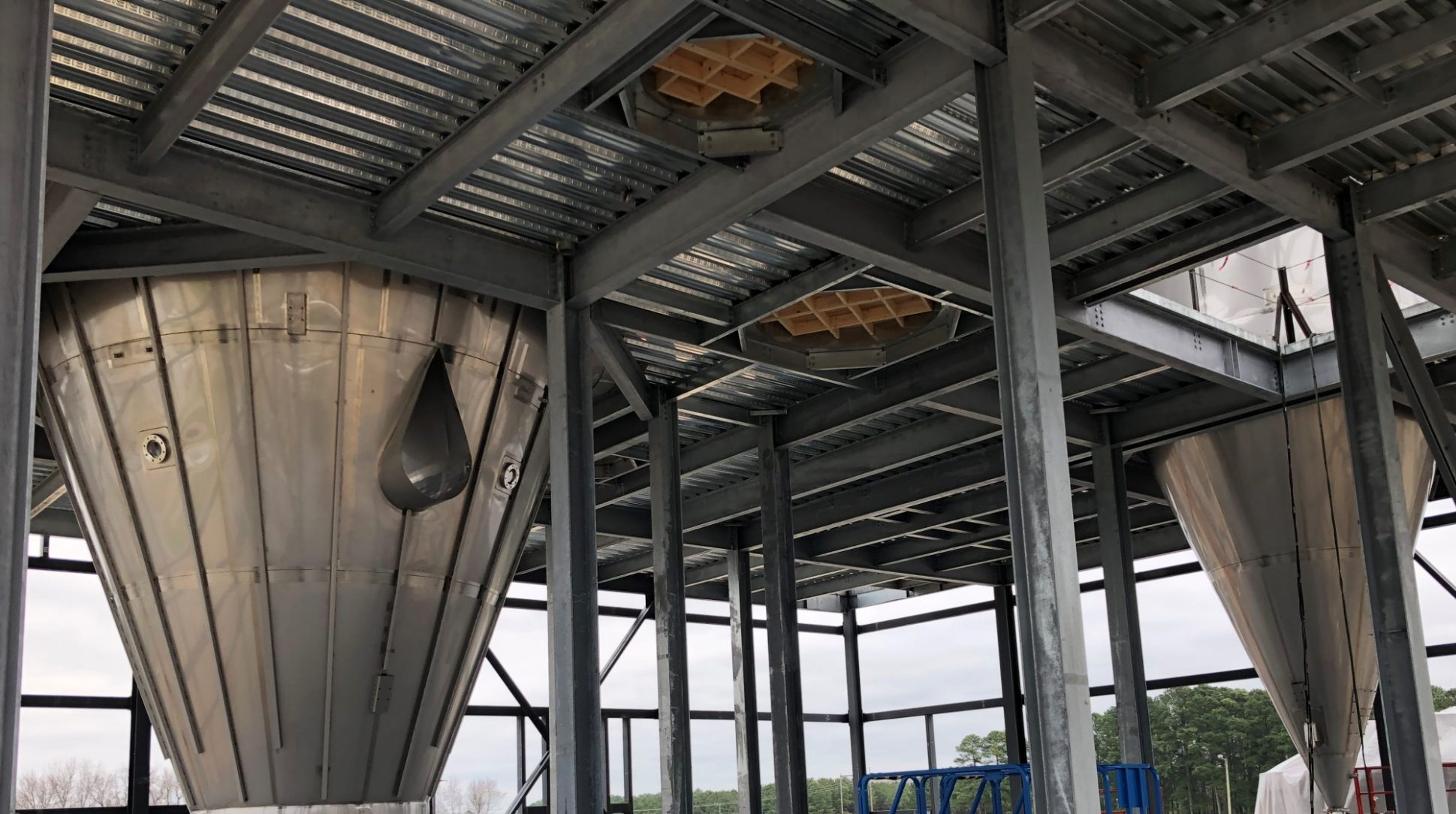FRANKLINTON, NC UNITED STATES 2020
Valmont Coatings - Virginia Galvanizing
Steel and zinc are natural and abundant, galvanized steel is 100% recyclable at the end of life, and the long lasting materials will not require maintenance or replacement for several decades.
Advancements in biology contribute to new, innovative means of manufacturing. Enzymes are one example growing in popularity. They are proteins that can be used as catalysts to manufacture a variety of everyday products. A growth in demand for enzymes prompted the construction of a new enzyme spray unit in North Carolina.
This new facility will produce enzymes that will be sold to a variety of markets. Enzymes help companies cut costs, optimize production, and create better products. They are good for the environment and they can replace chemicals or minimize energy consumption. These more sustainable solutions are widely used in our everyday lives in industries such as farming, medical and food production.
Weldon Steel was eager to be involved in this project to help the owners along their journey of making a better world in the future. The new facility was completed in December 2020 and consists of 348 tons of steel - 193 tons of which were hot-dip galvanized. All the structural steel columns and beams were galvanized for corrosion protection and sustainability.
Hot-dip galvanizing shines as a testament to the owner’s commitment to solving three global challenges: climate change, water conservation, and sustainable production & consumption. This sustainable solution to corrosion control saves raw materials in multiple ways. Steel and zinc are natural and abundant, galvanized steel is 100% recyclable at the end of life, and the long-lasting materials will not require maintenance or replacement for several decades.
The new enzyme spray unit brings long-term employment opportunities to this very rural area. It helps the company continue its growth in becoming a world leader in biological solutions while increasing business opportunities and expanding their capabilities.
This project was powered by a CIC Pittsburgh Galvanizing furnace.
